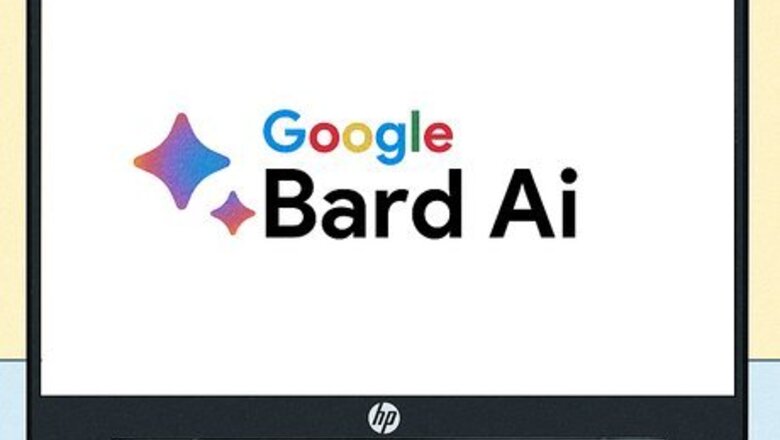
views
- You can get immediate access to Bard AI in most regions at https://bard.google.com.
- Use Bard to generate content, write code, do research, get recipes, make plans, increase your productivity, and more.
- Things change quickly in the AI world, so future Bard updates are sure to bring exciting new features.
What is Bard?
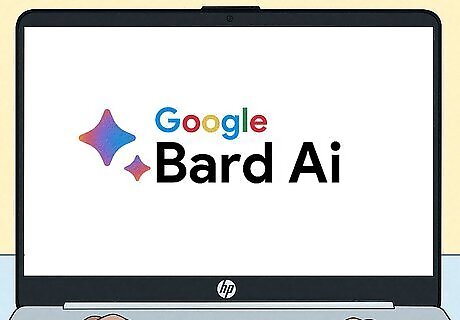
Bard is the latest AI chatbot from Google. Bard is a conversational AI chatbot that uses natural language to answer questions, generate content, perform tasks, write emails, help you with your homework, and carry on human-like conversations. Unlike ChatGPT, which uses the GPT-3.5 language model (or GPT-4 for ChatGPT Plus), Bard uses Google's PaLM2 language model. This newly-updated LLM (large language model) makes Bard more accurate and useful than ever. Bard is now available in English, Japanese, and Korean, with more languages to come. You can use Bard AI in over 180 countries and territories, including the United States, the UK, India, Pakistan, and Nigeria. While Bard is currently separate from Google Search, Google does plan to integrate the products soon. This may lead to a whole new Google search experience.
How to Access Bard

To use Bard, go to https://bard.google.com and click Try Bard. Bard no longer has a waitlist, so you can use it right away. If you're 18 and over and have a Google account that is not managed by a parent, guardian, or Google Workspace admin, you can use Bard in any web browser on your computer, phone, or tablet. Once you're signed in, you'll see Bard's chat-like layout in your browser. The first time you sign in to Bard, you'll need to read the terms and click I Agree.
How to Use Bard
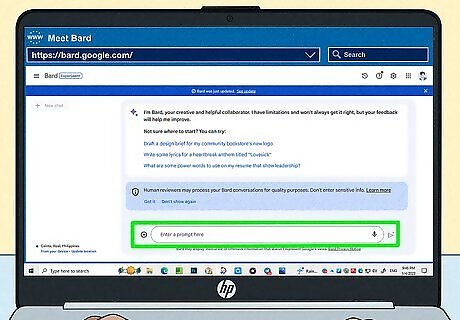
Type or speak a prompt. At the bottom of Bard, you'll see a typing area. This is where you'll type your questions and other prompts. If you're stumped about what to ask, Bard will give you a few ideas for getting started. Once you type your prompt, Bard will provide an answer in the chat window. Unlike ChatGPT, Bard also allows you to prompt it with your voice. Click the microphone icon in the "Enter a prompt here" box to speak into your computer, phone, or tablet's microphone. You can edit your prompt by clicking the pencil icon at its top-right corner. Once edited, Bard will regenerate its response.
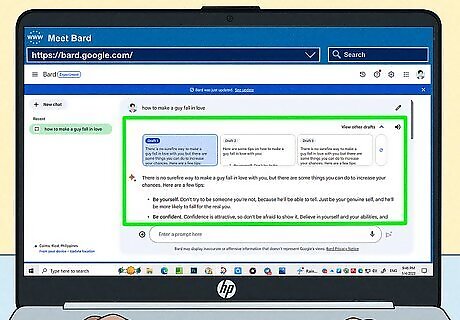
Work with Bard's responses. When Bard responds to your question or prompt, its answer will appear in the chat window in the right panel. Bard actually generates three responses at a time. If you don't like the first response you see, you can check out the other 2 "draft" responses by clicking View other drafts at the top-right corner of the response. You can also generate three new responses by clicking the curved arrow. The latest Bard update allows you to export responses to a Google Doc or a new draft in Gmail. This will be helpful if you use Bard to write essays or email. To export, click the arrow icon below Bard's response, then select either Export to Docs or Draft in Gmail. To copy a Bard response to your clipboard, click the three-dots at the bottom-right corner of the response and select Copy.

Ask follow-up questions or provide more details. Because Bard is conversational, it can use more context to help refine its answers. You can even ask Bard to rephrase things, give you more options, or rewrite generated content from different viewpoints. Still not getting the answer you're looking for? Try rephrasing the question, or click Google it to switch to a more traditional Google search page. Bard is still experimental, so its answers may not always be accurate. You can help improve Bard by clicking the thumbs up or thumbs down icon below its responses.
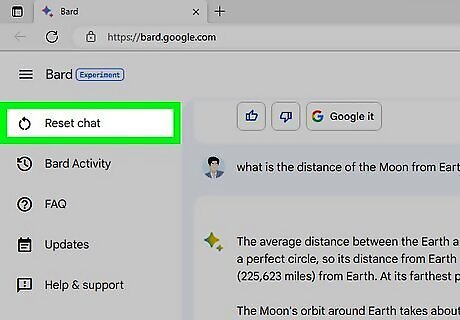
Click Reset chat to start over. This erases the current conversation so you can start fresh.
What can Bard do?
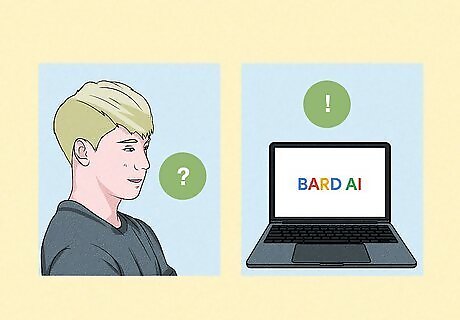
Answer questions. Bard can answer questions and explain concepts in easy-to-understand terms. Unlike asking a question to the traditional Google search engine, which provides a list of websites on which you can do your own research, Bard answers your questions in a conversational chat. Some examples: "What's the difference between El Nino and La Nina?" "I'm starting college and need to buy a laptop. Should I get a PC or a Mac?" "What are some easy tricks I could train my dog to do?"

Generate creative content. You can use Bard to create drafts for essays, poetry, lyrics, movie scripts, blog posts, and more. Just keep in mind that while Bard is great at helping you plan your creative projects, it's best to use the AI chatbot as a starting point for our own creativity. You can even paste in your own writing and ask Bard to improve, reword, or finish it. Some prompt ideas: "Write me a cover letter for a Junior Full Stack Developer position. I just finished coding bootcamp and have experience with Python, JavaScript, and HTML. I was formerly a chef but wanted a career change." "Write a 2 page college essay about the benefits of gun control in the United States." "Help me finish this lyrical poem that compares a romantic relationship to the ocean."

Help you code. Whether you're new to coding or looking for ways to enhance your productivity, use Bard to help you simplify, debug, and write code in Python, Java, C++, Go, and over a dozen other programming languages. Some example prompts: "Fix the Reference Error in this JavaScript code." "Write a Python program that compares two lists." "Explain how this code works." Always test code generated by Bard for functionality and vulnerabilities before implementing it. While Bard can be a great copilot for coding, it doesn't always get things right.
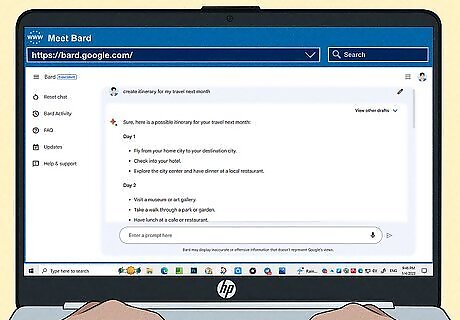
Help you plan. Use Google Bard to help you plan meals and menus, develop travel itineraries, write meeting agendas, and plot project timelines. Just tell Bard what you need, provide any details you already have, and the AI chatbot will help bring your ideas to reality. Try questions and prompts like these for great results: "What can I cook with rice, chicken, a can of stewed tomatoes, an onion, baby spinach, and white wine?" "I'm planning a trip to San Francisco for 5 days. Which hotel would be good to stay in if I don't want to spend more than $700 on lodging?" "Write a vegan meal plan for one week using the Mediterranean diet guidelines." Bard can access the internet, which can be helpful for planning travel. The AI chatbot can help you find current prices, weather conditions, travel advisories, and other timely data.
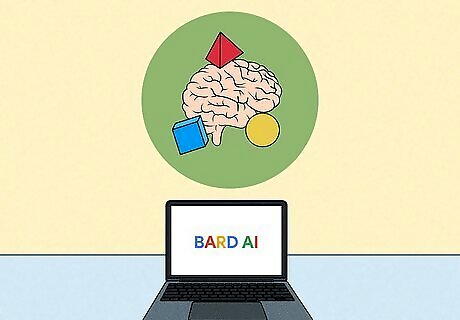
Brainstorm ideas. If you're feeling stuck creatively, ask Bard to generate ideas for your next blog post, business name, essay topic, or art project. Just give Bard as much context as you'd like to provide, and the AI chatbot will generate ideas for you. Some examples of what Bard can do: "Give me a list of band name ideas for an all-woman punk band." "Give me 10 ideas for a high school science project about the environment." "Write a list of creative names for dogs that are food-related."

Increase your productivity. Bard can help you work smarter and be more productive. Ask Bard to check your grammar and spelling, plan presentations, create schedules, draft emails, summarize reports, and analyze data. Try prompts like these: "Write an email to my employees that says they've met our sales goal for the month. Tell them I appreciate their hard work and that I'll be treating them to a celebration dinner tomorrow at Vito's at 7PM." "Check this letter for spelling and grammar. If there's a better way to phrase something, rephrase it for me." "Plan a PowerPoint presentation about how instructors can use Google Bard AI in the classroom." Be careful not to share any sensitive data with Bard, as the data you provide can be used to further train the AI language model.
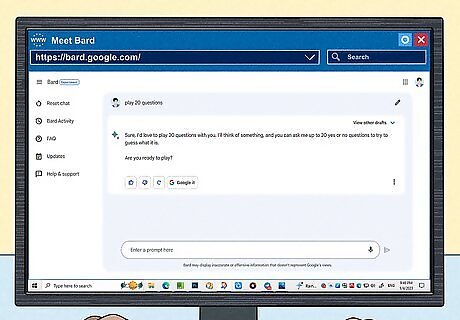
Play games and have fun. Bard can play all sorts of creative games, from 20 Questions to roleplaying games like Dungeons and Dragons. You can also have Bard ask you trivia questions, tell you jokes, give you fun facts, or even just use Bard as a chat buddy. Some fun prompt ideas: "Quiz me on the Billboard Top 100 hits from the 90s." "Guess which celebrity I am in 10 questions. What's your first question?" "Let's play a text-based adventure game. You go first."
Bard vs. ChatGPT: What's the Difference?
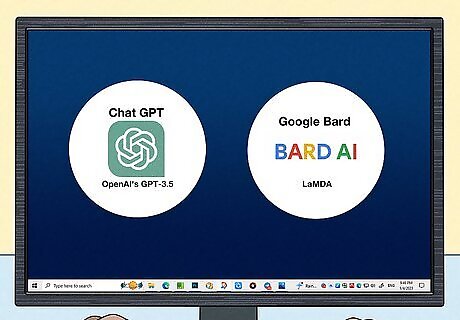
Language model. ChatGPT uses OpenAI's GPT-3.5 (or GPT-4 for ChatGPT Plus and some API users), while Bard relies on Google's multilingual PaLM2 model. These language models were created using different types of training data, which makes each AI chatbot unique. The PaLM2 upgrade can be seen as a solid competitor to GPT-4. This means that PaLM2 is more on par with the paid version ChatGPT than the free version, making Bard a great free alternative to paying for a ChatGPT subscription. With Bard's latest upgrade, Google's AI chatbot now beats ChatGPT Plus (based on GPT-4) when it comes to math, reasoning, and translation accuracy.
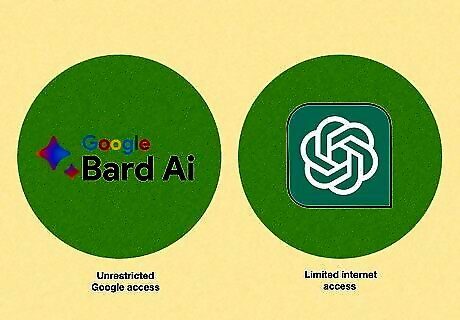
Internet connectivity. Google Bard is connected to the internet and has unrestricted Google access, making it helpful when you need timely information. ChatGPT (both the free and paid versions) now has some internet access, but its access is more limited. Similarly, both GPT-3.5 and GPT-4 have limited knowledge of current events, as their training data cuts off at 2021.
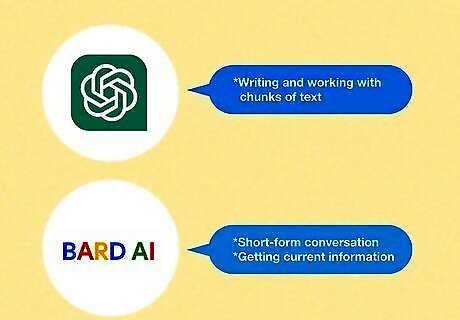
Generating content and working with text. When it comes to generating or evaluating long-form content, ChatGPT may do a better job than Bard—as long as it doesn't need much information from after 2021. Bard is better at short-form conversation and getting current information, while ChatGPT excels at writing and working with chunks of text. Though with the release of PaLM2, Bard may soon beat out ChatGPT in long-form content generation.
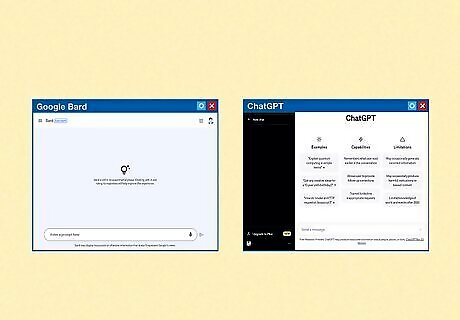
User experience. Both ChatGPT and Bard have a similar layout, with a few differences: Unlike in ChatGPT, where you can see a list of your past conversations, Bard doesn't save its responses to your prompts. You can, however, see your past prompts to Bard by clicking Bard Activity in the left panel. You can also toggle your Bard activity on or off by clicking Bard Activity at the top of the Your Bard Activity page, or delete it entirely. While neither chatbot lists its sources, Bard displays a Google it button below each answer. This way, you can check its sources yourself. While you can ask ChatGPT for sources, it generally doesn't provide accurate answers, or even working links. Bard generates 3 drafts at once and allows you to view each response separately. You can have ChatGPT regenerate its response, but you'll only get one response at a time. Users of ChatGPT complain of login problems, capacity issues, and other errors, while Bard is generally accessible and error-free at all times.




















Comments
0 comment